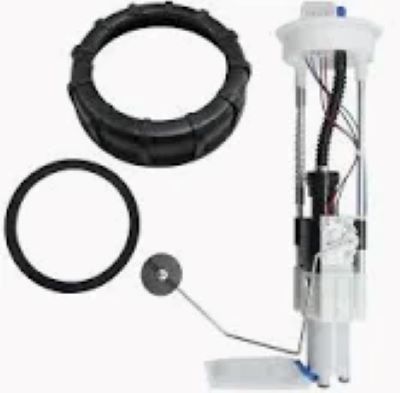Fuel pump all of a sudden decides not to work after the car has been started cold?? The most common culprit is temperature response, which can impact the efficiency of the pump. The low temperature affects the performance of the fuel pump, and in some areas where it recently snowed is quite common that future temperatures will fall below zero. There is evidence to suggest fuel pump efficiency can drop by as much as 20-percent in conditions at or below freezing, thanks largely to the increased viscosity of fuel in cold temps making it more difficult for the pump to move fuel through its system.
A common problem will be condensation accumulation in the gas lines. However, when those temperatures retreat to freezing thermals, the moisture is going to solidify and cause blockages which will hinder fuel from making its way into your engine. Industry data indicate that ice buildup in fuel lines occurs in 30% of the vehicles that are stalling due to cold start fuel pump failure; Frozen lines have even been known to entirely shut off fuel the flow to the pump in some cases, rendering it completely nonfunctional until the system thaws.
The plastic components in fuel pumps are frequently not temperature stable. Like any metal or alloy, cold exposure of stainless steel can cause it to become susceptible to fatigue when over time the weather conditions are experienced repeatedly. Studies found that irreversibly aging of plastic fuel pump components makes them more fragile up to 25%, especially when vehicles are regularly operated in very cold temperatures below -0°C like Canadian or Northern Europe resist with their hard winter.
The level of current may also be dependent on the electrical connections in your fuel pump. This provides an increase of resistance for the relay to be able to deliver power to the pump in colder weather. Industry tests have proved that in minus 17-degrees Celsius (0 degrees Fahrenheit) weather, the current flow to the pump can drop up to 15 percent, which may delay or prevent starting. If there isn't enough power, the pump will not have sufficient pressure to keep running after a cold start.

An example of a wide range case was the vehicle recall in America for over 100,000 cars having allowed in fuel pump malfunctioning affected by cold weather circumstances. Manufacturer discovered that the pump housing was just not insulated well enough to prevent cold air from leaking into it and messing up its flow in freezing conditions.
Or as Henry Ford said it best: "Obstacles are those frightful things you see when you take your eyes off your goal" This is the heart of cold-start failures —drivers tend to diagnose and address the specific problem without considering how the weather exacerbates part wear.
It can be more costly than even routine maintenance to fix fuel pump problems caused by cold starts. To give context, replacing a fuel pump should result in an expense between $500 and $1,000 depending on the make and model of your car. But, preventing the issue by using fuel additives that lower gasoline's freeze point or parking in a warmer garage can make a huge difference of likelihood to have fuel pump failure.
The cold start difficulties can owe to the quality of fuel as well. Fuel of a lower quality may have more water in it, making it ice up easier. Premium fuel also has a lower probability of these issues as premium grades typically contain less impurities and have higher octane levels for better cold weather performance.
At the end of the day, cold weather presents a lot of problems for fuel pumps between thicker fuels to electrical resistance to gelled fuel lines. If you would like more details abouthow to keep your vehicle´s fuel system and how your fuel pump works even if it is cold, visit Fuel Pump.